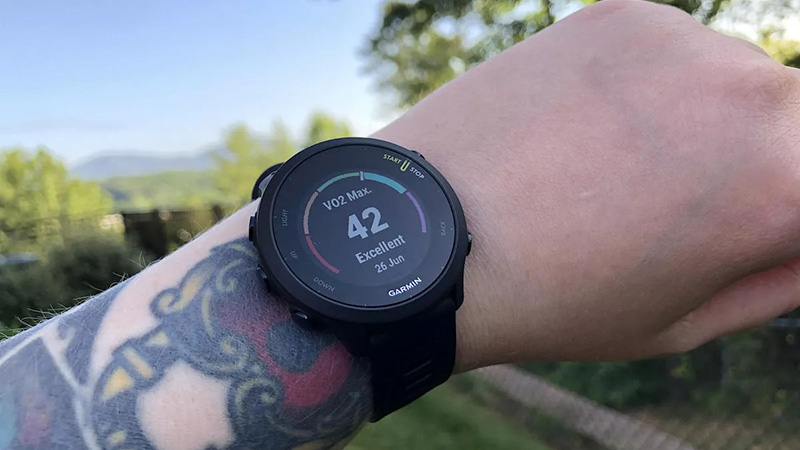Leaked Garmin Forerunner 165 has nearly everything thrifty runners would want
Upgrades like an AMOLED display, altimeter, and running dynamics will tempt Forerunner 55 owners to upgrade.

What you need to know
- Fitness Tracker Test has leaked specs for the unannounced Garmin Forerunner 165 running watch.
- Key hardware upgrades include a 1.2-inch AMOLED display, Elevate V4 sensor with HRV and SpO2, all-GNSS tracking, compass, and altimeter.
- Key software improvements include running dynamics and power, open-water swimming metrics, Morning Report, Race Widget, and Nap Detection.
- Garmin intends to sell Music and non-Music versions and could launch the Forerunner 165 "soon."
Leaked information from Garmin's website suggests the Garmin Forerunner 165 will launch very soon, with some key upgrades over the Forerunner 55 to reclaim the budget running watch market.
The leak, courtesy of Fitness Tracker Test, tells us nearly everything to expect from the watch except for its release date and price. While it's a huge upgrade compared to the Forerunner 55, we have to wonder if this new model's price will creep a bit too high as a result.
According to FTT, the Forerunner 165 will have a 1.2-inch AMOLED display with 390 x 390 resolution and 43 x 43 x 11.6 mm dimensions. That resolution matches the Venu 3S' display, but the Forerunner 165 would have wider bezels and a narrower design, along with more buttons for more straightforward navigation.
Thanks to the switch from MIP to AMOLED, the Forerunner 165 battery life allegedly dips to 11 days and 19 GPS hours, compared to 14 days and 20 hours for the Forerunner 55. While some runners will happily ditch the dull MIP display, others will resent the shorter battery life.

That negative aside, every other Forerunner 165 upgrade should have runners excited. On the hardware side, runners will now have a compass for breadcrumb navigation, all-systems GNSS for better tracking accuracy than the GPS-only Forerunner 55 could provide, and an altimeter for judging your effort at elevation.
For health data, you jump from the Elevate v3 to v4 heart rate sensor, which delivers HRV stress tracking that gives you better Body Battery accuracy. The v4 sensor powers many of the best Garmin watches of the last few years, and it's proven quite accurate in our tests.
The Forerunner 165 won't have the Venu 3's Elevate v5 sensor, so there are no ECG or skin temperature readings, but you might not expect those in a budget tracker regardless.
Get the latest news from Android Central, your trusted companion in the world of Android
As for new software, it'll all sound familiar to Forerunner 265 owners: A Morning Report with suggested workouts and sleep summary, a Race Widget for checking your next race, wrist-based running dynamics to analyze your form and judge your running power, and nap detection.
What we don't know is whether the Forerunner 165 will have key training tools like training effect, training load focus, or training readiness that the Forerunner 55 lacked. Garmin might reserve these for more "serious" runners at higher tiers.
FTT reports that the Garmin Forerunner 165 will ship in Black and White, while a Forerunner 165 Music version with 4GB of storage and a wi-fi antenna will come in aqua or pink finishes. Music upgrades typically come with a $50 surcharge.
The AMOLED display alone could make the Forerunner 165 more expensive than the Forerunner 55; the only question is, how much more expensive? The Forerunner 265 costs $450, while the Forerunner 255 costs $350. If this pattern holds, the Forerunner 165 might cost $250, or $300 for the 165 Music.
Based on past Garmin website leaks, we can expect the Forerunner 165 to launch sometime within the next month or two. Aside from the COROS PACE 3, most running watches have gotten prohibitively expensive; we're excited to see whether the Forerunner 165 changes that trend.

Michael is Android Central's resident expert on wearables and fitness. Before joining Android Central, he freelanced for years at Techradar, Wareable, Windows Central, and Digital Trends. Channeling his love of running, he established himself as an expert on fitness watches, testing and reviewing models from Garmin, Fitbit, Samsung, Apple, COROS, Polar, Amazfit, Suunto, and more.
